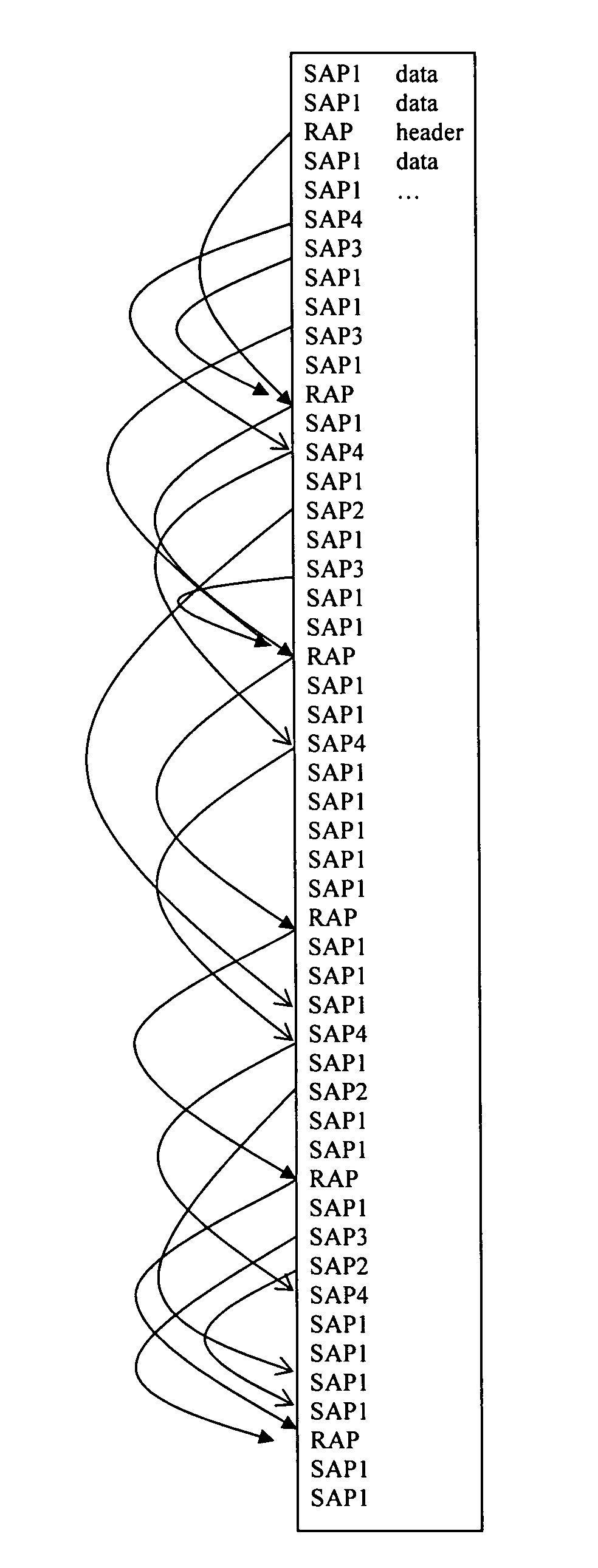Random access audio decoder
an audio decoder and random access technology, applied in the field of random access in decoding audio files, can solve the problems of preventing the user from starting the audio playback, not being able to easily fast forward or rewind through the audio file, and many 3g phone manufacturers being forced to disable useful features
- Summary
- Abstract
- Description
- Claims
- Application Information
AI Technical Summary
Benefits of technology
Problems solved by technology
Method used
Image
Examples
Embodiment Construction
1. Overview
[0023]Preferred embodiment methods of random access into an AMR file use a successive node (byte) analyses to eliminate possible audio frame headers and then deem the first of the remaining audio frame headers and the start of the random access playback. FIGS. 2-7 heuristically illustrate the successive eliminations of nodes in a sequence of audio frames.
[0024]Preferred embodiment systems perform preferred embodiment methods with digital signal processors (DSPs) or general purpose programmable processors or application specific circuitry or systems on a chip (SoC) such as both a DSP and RISC processor on the same chip with the RISC processor controlling. A stored program in an onboard ROM or external flash EEPROM for a DSP or programmable processor could perform both the frame analysis for random access and the signal processing of playback. Analog-to-digital converters and digital-to-analog converters could provide coupling to the real world, and modulators and demodulat...
PUM
 Login to View More
Login to View More Abstract
Description
Claims
Application Information
 Login to View More
Login to View More - R&D
- Intellectual Property
- Life Sciences
- Materials
- Tech Scout
- Unparalleled Data Quality
- Higher Quality Content
- 60% Fewer Hallucinations
Browse by: Latest US Patents, China's latest patents, Technical Efficacy Thesaurus, Application Domain, Technology Topic, Popular Technical Reports.
© 2025 PatSnap. All rights reserved.Legal|Privacy policy|Modern Slavery Act Transparency Statement|Sitemap|About US| Contact US: help@patsnap.com



